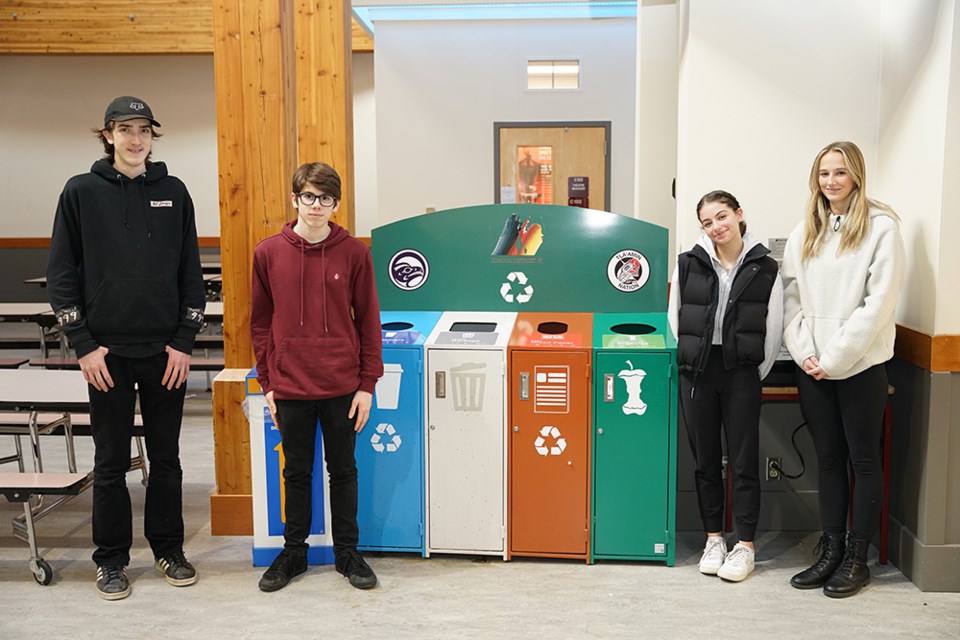Inspired by solid waste audits conducted for qathet Regional District at Augusta Recyclers, Brooks Secondary School students conducted an audit of the school’s solid waste.
Several students made a presentation at the Powell River Board of Education meeting in January, highlighting their findings for school trustees.
In an interview with the Peak, the students from Graham Cocksedge’s environmental sciences 11 class said they looked at the regional waste audit carried out by the Let’s Talk Trash team and consultants in May and November 2021.
Cocksedge told his students about the waste audits that had been conducted and they became interested.
“It inspired us to look at our own waste,” said Kaili Mitchell, one of the environmental sciences students. “We collected data from waste bins, divided the trash bins, and put it into percentages.
“We had big problems with contaminants, mainly in our recycled bottles and our organics.”
Georgia Malamas said garbage was sorted in October of last year. The school has waste bins placed in strategic locations, according to Malamas, and she added the audit was in the morning, so the bins were not full.
The waste was sorted into a number of different categories, such as recycling items, paper, cardboard, soft and hard plastics, compost and garbage. The collection involved all the environmental sciences class members. Five of the students put the results of the waste audit together to present to the school board.
Graden Fraser said the whole class was active in the sorting and the organizing of materials.
“Everybody bought into it,” added Fraser.
Malamas said a large proportion of the discarded items were misplaced, with up to 52.2 per cent of waste in the school’s zero-waste bins contaminated, according to statistics the students revealed to the school board.
“In the containers, if something is contaminated, it can’t be recycled and has to go in the garbage,” said Malamas. “We got to see how much waste we create that we think we are putting into the right bins.”
Myles Peterson said there was expectation that there would be some contamination, but it was perhaps worse than expected.
Fraser said the hope is that there will be an educational component which grows from the class project.
“Our class is ending now but we’ve made the school’s administrative staff aware and the environmental club that’s within the school, showing them what we have discovered and found out,” said Fraser. “We’ve proposed some possible solutions to help solve the problem.”
Malamas said the objective is to have as little as possible being introduced into the garbage waste stream.
“We came into this project and were really interested to see how the school was managing its waste,” said Malamas. “When we looked at all the data and we saw possible solutions, I think we all got interested and focused on showing the administration how we can better solve this problem.”
Peterson said it would be easy to help the school move forward and help the process by joining the school’s environmental club.
“It’s an active group,” he added.
He said future environmental sciences classes can also carry the project forward to continue the emphasis on proper solid waste separation, ensuring students maximize the amount of waste that can be recycled, rather than discarded.
According to a PowerPoint presentation the students gave to School District 47 trustees, during lunchtime and breaks, they suggest that the hall monitors/teachers who are already stationed in the hallways for supervision stand by the waste stations and direct the students to where their waste goes. Those teachers or students will be informed of the whole situation and how the stations work, the presentation stated.
The students will be informed that teachers/students will be at the stations helping and guiding, just to get a habit established.



